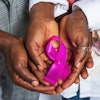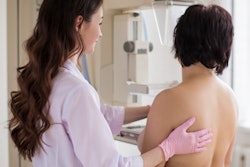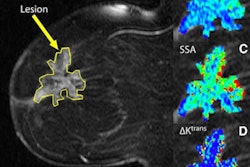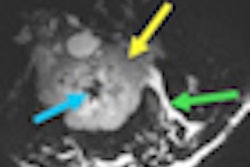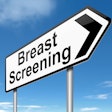Mammography rates have improved among foreign-born women residing in the U.S., with access to healthcare driving much of the change, according to a study presented at the American Association for Cancer Research (AACR) annual meeting being held this week in Washington, DC.
Despite improvements, however, disparities in mammography screening remain a problem for immigrant women, according to lead researcher Nengliang Yao, a doctoral student in health policy and administration at Pennsylvania State University. Yao and colleagues found that a lack of access to health insurance and a regular source of healthcare are important factors related to the lower percentage of mammography screening among U.S. immigrants.
"While mammography rates have improved among foreign-born women residing in the United States, these women are still less likely to have undergone breast cancer screening than native-born U.S. women," he wrote.
Yao and colleagues used data from the 2000 and 2008 National Health Interview Survey, conducted by the National Center for Health Statistics and administered by the U.S. Census Bureau, to look at mammography screening among immigrants and factors associated with its use.
The researchers found that screening rates among immigrants increased from about 60.2% in 2000 to 65.5% in 2008, and disparities in the use of mammography between immigrants and native U.S. citizens narrowed from 11.2% in 2000 to 3.4% in 2008. The team also found that immigrants living in the U.S. a decade or longer had significantly higher mammography rates compared to those who had been in the country less than a decade (64.7% versus 39.3% in 2000; 67.9% versus 55.7% in 2008).
Part of the improvement in mammography screening rates is due to an increasing number of culturally and linguistically appropriate subsidized screening mammography programs, such as the U.S. Centers for Disease Control and Prevention's (CDC) National Breast and Cervical Cancer Early Detection Program, that encourage foreign-born women to seek a mammogram, Yao said.
Whether or not an immigrant woman had insurance influenced whether she underwent screening, Yao's team found. By 2008, immigrant women with public insurance were twice as likely as uninsured immigrant women to have received a mammogram; immigrant women with private insurance were 2.5 times more likely than uninsured women to have received a mammogram.
Whether immigrant women had a regular source of healthcare also became a more important predictor of mammography use over time, according to Yao and colleagues. In 2008, women with a regular source of care were more than twice as likely to receive screening than women without a regular source of care.

